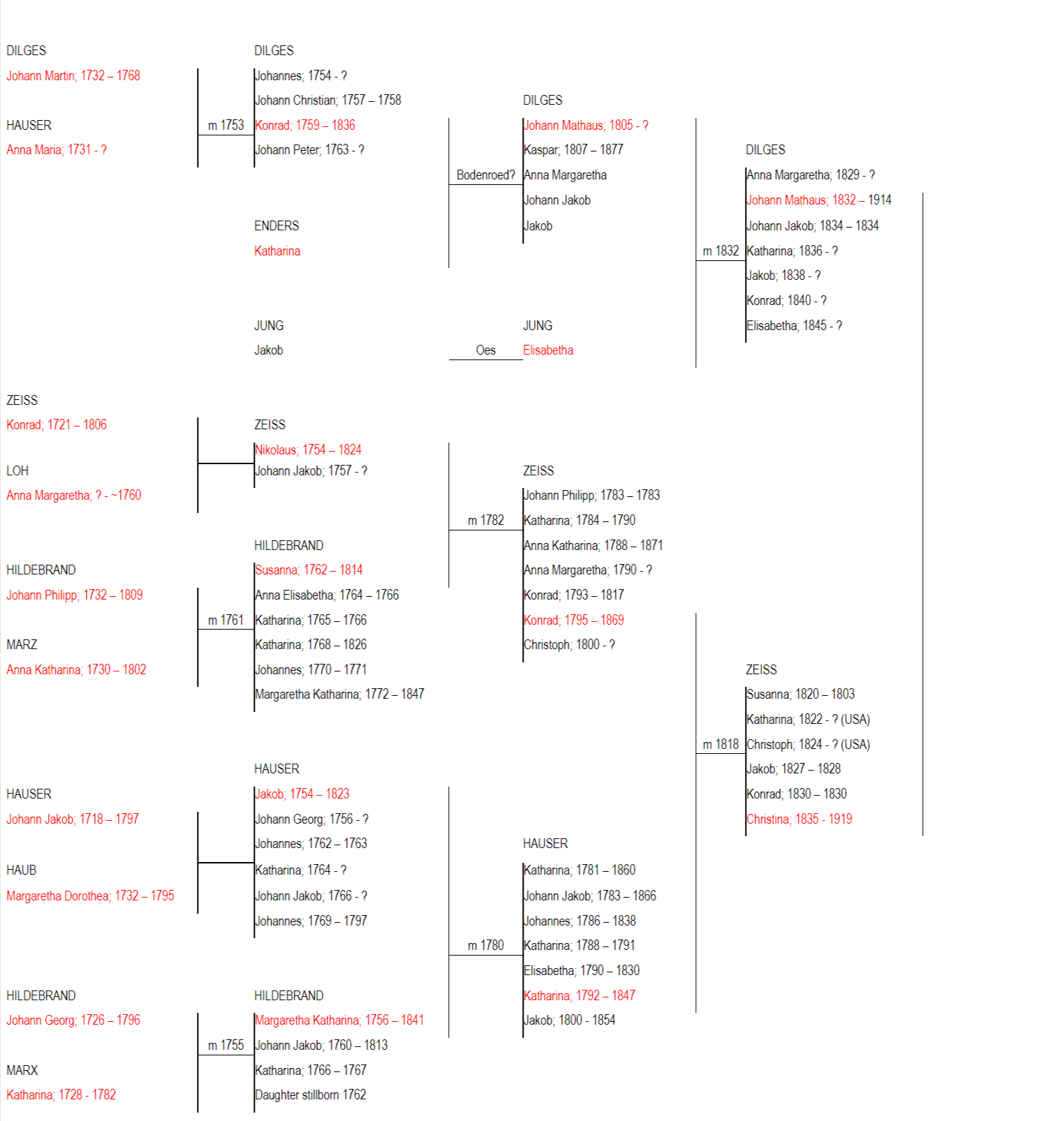Christina ZEISS 1835-1919
Johannes Zeiss supported his family on the produce from a very small landholding – about the size of three suburban blocks in present-day Melbourne or Sydney – during the hazardous times of the Thirty Years War. The family did not flourish and Konrad was the only productive male of that name in the village thirteen years later. His son Nikolaus and wife Susanna nee Hildebrand, had four sons of whom Konrad born in 1795 was to be Christina’s father. Konrad’s eldest brother lived for less than a day and the other two died before marrying, so it was left to Konrad to carry on the Zeiss name. He and his wife, Katharina nee Hauser, did produce three sons, but two of these died in infancy and the one surviving boy migrated to North America. Konrad’s death in 1865 saw the end of the Zeiss name in the village.
Born on 23rd February 1835, Christina was the last of six children in the family. Her mother died in 1847, by which time her two older sisters were married, so Christina had to help with the domestic tasks. She was confirmed on Whitmonday 1849, which meant that she was able to finish up at school and take over the running of the household full-time.
On 16th August 1855, Christina married Johann Matthaus Dilges, a journeyman blacksmith whose family were long-time farmers in Oes, a hamlet a few km west of Nieder-Weisel. The young couple moved into the Zeiss house where, on 21st July 1856, Christina gave birth to a daughter, who was named Katharina. Her husband had decided to join the emigration to the goldfields of Victoria, now reaching its peak so, when their child was old enough to be left with a foster mother, Christina and Johann Matthaus left for the English port of Liverpool where they took passage on the ship “Sir W F Williams”, bound for Hobart Town with more than 200 bounty passengers. There were also 60 Swiss and German emigrants who were heading for Melbourne; 25 of these were from Nieder-Weisel.
They cleared port on 27th May 1857 on what became a frightening experience. Captain Bentley took his ship into the high latitudes so as to ensure that they would clear Tasmania; this put them into the path of extremely boisterous weather, causing the loss overboard of the ship’s purser. From the Derwent river, the tramp “City of Hobart” took the Nieder-Weiselerns to Melbourne on 31st August.
Whilst her husband set about establishing himself as a blacksmith in Ballarat, Christina devoted twenty years to producing their family. She bore a son, Jacob, in 1858 but the little boy succumbed to an attack of croup the next year. Elizabeth arrived in 186O and a second Jacob in 1863. Matthaus then moved his business to Sebastopol and built a more modern smithy. In 1866 Christina produced another daughter, whom she named for the little girl they left in Nieder-Weisel and who died in 1857. Sadly the second Catherine also died just after turning one. A fourth daughter, Annie, was born in 1868; she was followed by a third Catherine in 1872. A sixth girl took her mother’s name but she died of pneumonia three weeks after birth. Henry, born in 1878, became the second son to survive.
Just two years later, Christina’s eldest daughter married and grandchildren began to take the place of the sons and daughters who moved away from the Dilges home; eventually there would be thirty. In later life, Matthaus and Christina ran a hotel in Sebastopol, which kept them in touch with many of their compatriots. Their family gathered in 1905 to celebrate their Golden Wedding Anniversary. In 1914 Christina was widowed. During the Great War she became naturalised and lived out her last few years as a citizen of her adopted country. Death came to Christina on 1st September 1919 in her 85th year; she was buried two days later in the Ballarat Old cemetery.
View Christina's Family Chart

